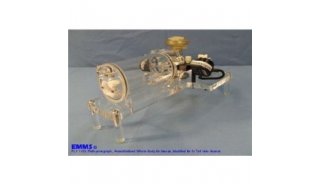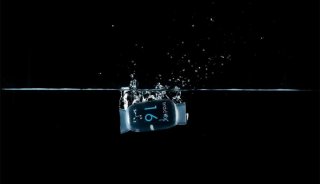Hypoxia-Inducible Factor in the Cardiovascular System

Hypoxia (or low O2 levels) affects various pathologies. First, tissue ischemia, a variation in O2 tension caused by hypoxia/reoxygenation, can lead to endothelial cell changes. For example, long periods of ischemia result in endothelial changes, such as vascular leakage, resulting in varicose veins. In more severe situations, ischemia can lead to myocardial or cerebral infarction and retinal vessel occlusion. Of interest, HIF-1 is stabilized prior to induction of vascular endothelial growth factor (VEGF) expression during acute ischemia in the human heart. Second, pulmonary hypertension associated with chronic respiratory disorders results from persistent vasoconstriction and vascular remodeling. Third, hypoxic gradients created in enlarging solid tumors trigger expression of genes containing hypoxia response element (HRE)s such as those involved in angiogenesis. This allows subsequent delivery of O2, nutrients, and further tumor growth. Vascular remodeling is an important component to tumorigenesis; without proper blood supply, delivery of oxygen may occur by diffusion, but becomes inefficient in tumors greater than 1 mm in diameter. Short-term hypoxia can also elevate platelet numbers, while prolonged exposure may cause some degree of thrombocytopenia in response to increased levels of erythropoetin (EPO). Another disorder involving inadequate responses to hypoxia is preeclampsia, a pathology of pregnancy thought to be caused by improper differentiation of placental trophoblast cells due to poorly controlled O2 tension or improper hypoxia-inducible factor (HIF)-mediated responses. The primary molecular mechanism of gene activation during hypoxia is through HIF-1. Several genes involved in cellular differentiation are directly or indirectly regulated by hypoxia. These include EPO, LDH-A, ET-1, transferrin, transferrin receptor, VEGF, Flk-1, Flt-1, platelet-derived growth factor-? (PDGF-?), basic fibroblast growth factor (bFGF), and others genes affecting glycolysis. HIF-1 is a member of the basic helix-loop-helix (bHLH)-PAS family of transcription factors known to induce gene expression by binding to a ~50-bp HRE containing a core 5'-ACGTG-3' sequence. bHLH-PAS proteins heterodimerize to form transcription complexes that regulate O2 homeostasis, circadian rhythms, neurogenesis, and toxin metabolism. Three bHLH-PAS proteins in vertebrates respond to hypoxia: HIF-1 , EPAS (HIF-2 ), and HIF-3 . These dimerize with ARNT (aryl hydrocarbon receptor nuclear translocator protein), ARNT-2, or ARNT-3. HIF-1 is ubiquitinated and subsequently degraded in less than 5 minutes under normoxic conditions. Although several candidate O2-sensing molecules have emerged in the literature, the molecular basis of how cells sense O2 levels is poorly characterized. pVHL, the protein product of a tumor-suppressor gene responsible for von Hippel Lindau disease, is implicated in this O2-sensing system by its association with HIF-1 , targeting it for ubiquitin-mediated degradation. Similarly, F-box-containing proteins recognize substrates of the ubiquitin ligases, targeting them for phosphorylation-dependent ubiquitination and proteosomal degradation. In addition to F-boxes, most of these proteins also contain a WD40 or a leucine-rich repeat (LLR) domain that presumably functions as a Ser/Thr binding module. A second family of proteins assisting the ubiquitin ligases share a region designated SOCS-box (originally from the suppressor of cytokine signaling proteins SOCS). Under low O2 (<5% O2) HIF-1 is stabilized leading to the formation of a functional transcription factor complex with ARNT. This complex is the master regulator of O2 homeostasis and induces a network of genes involved in angiogenesis, erythropoiesis, and glucose metabolism.
Contributor: Kosi Gramatikoff, PhD
REFERENCES: Harris A. L. von Hippel-Lindau syndrome: target for anti-vascular endothelial growth factor (VEGF) receptor therapy. Oncologist. 2000;5 Suppl 1:32-6. Review. Krebs DL, Hilton DJ. SOCS proteins: negative regulators of cytokine signaling. Stem Cells. 2001;19(5):378-87. Review. Ramirez-Bergeron DL, Simon MC. Hypoxia-inducible factor and the development of stem cells of the cardiovascular system. Stem Cells 2001;19(4):279-86 Review. Semenza GL. HIF-1 and mechanisms of hypoxia sensing. Curr Opin Cell Biol. 2001 Apr;13(2):167-71. Review. Yaffe MB, Elia AE. Phosphoserine/threonine-binding domains. Curr Opin Cell Biol. 2001 Apr;13(2):131-8. Review.






















